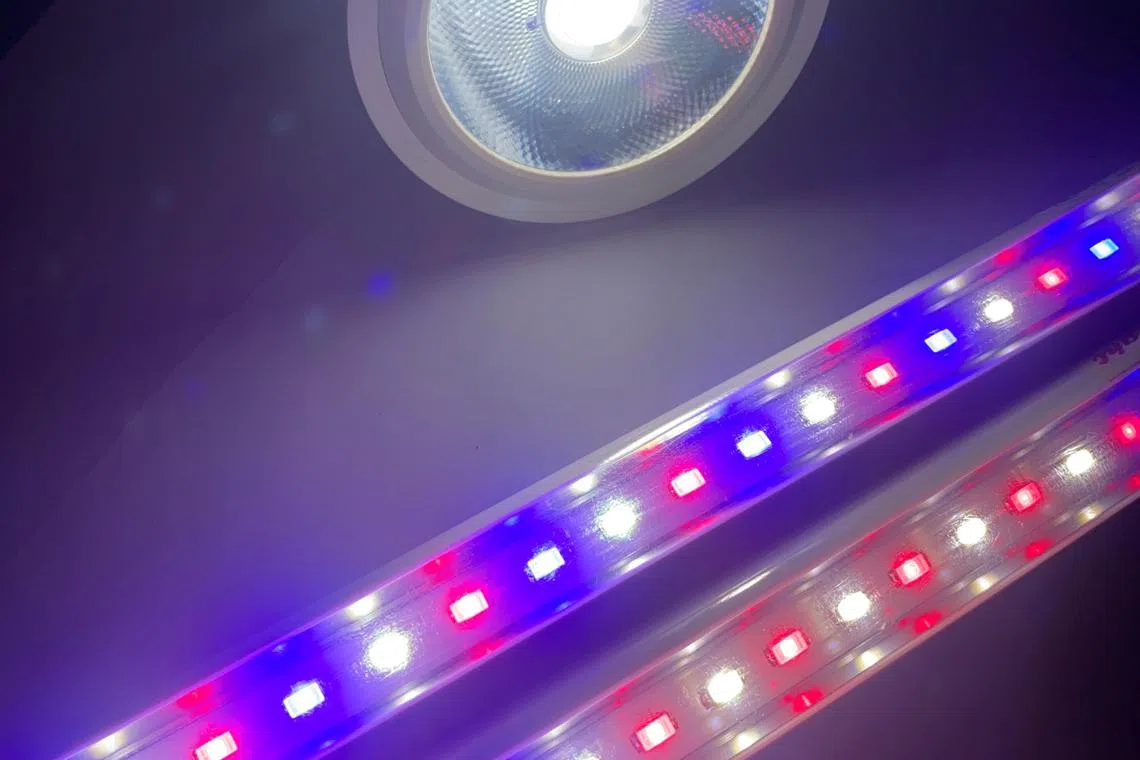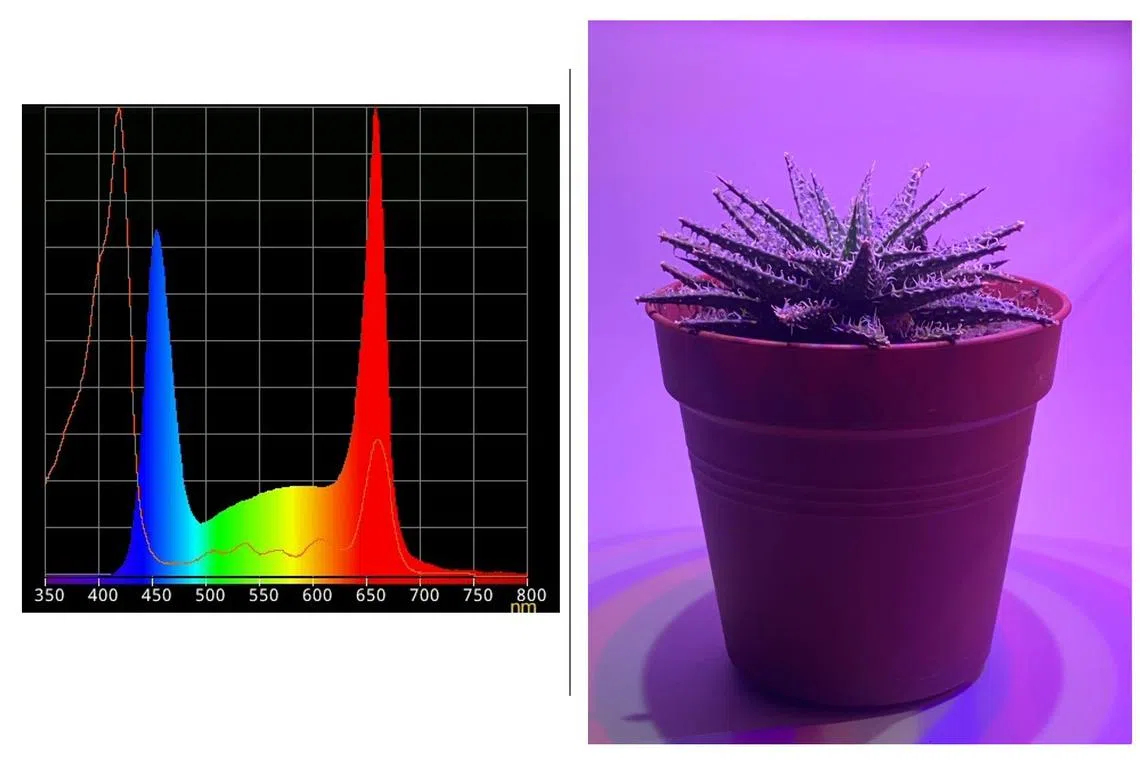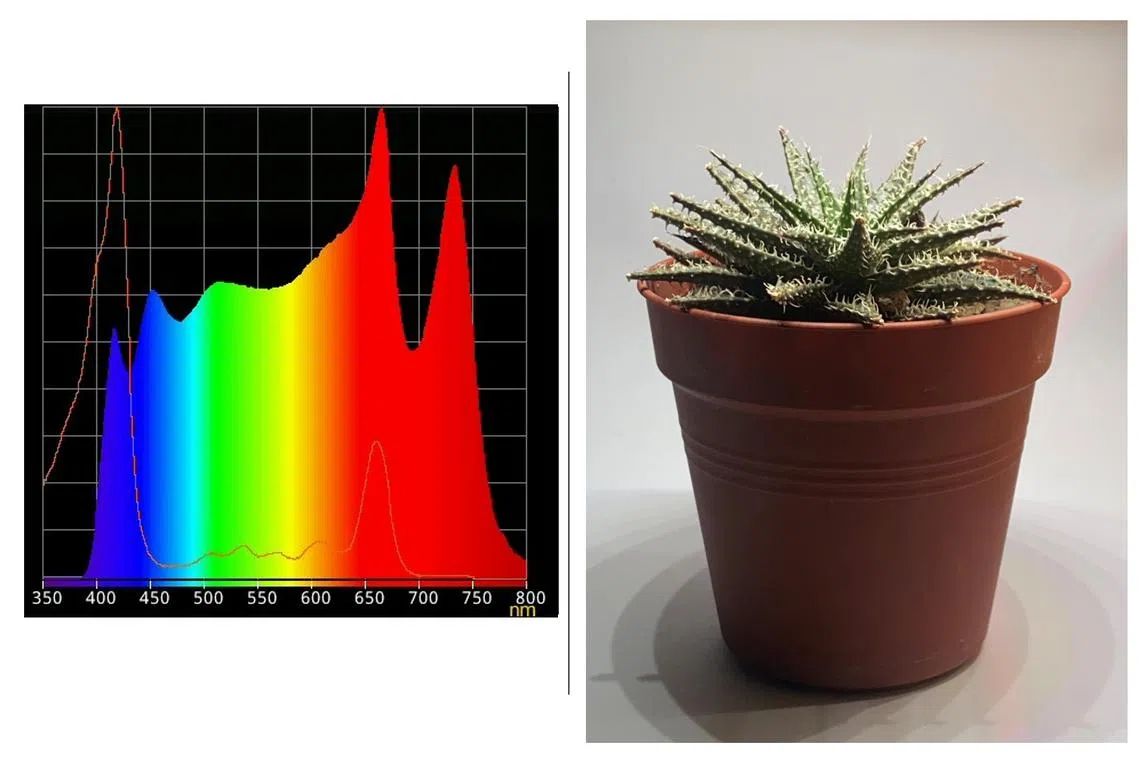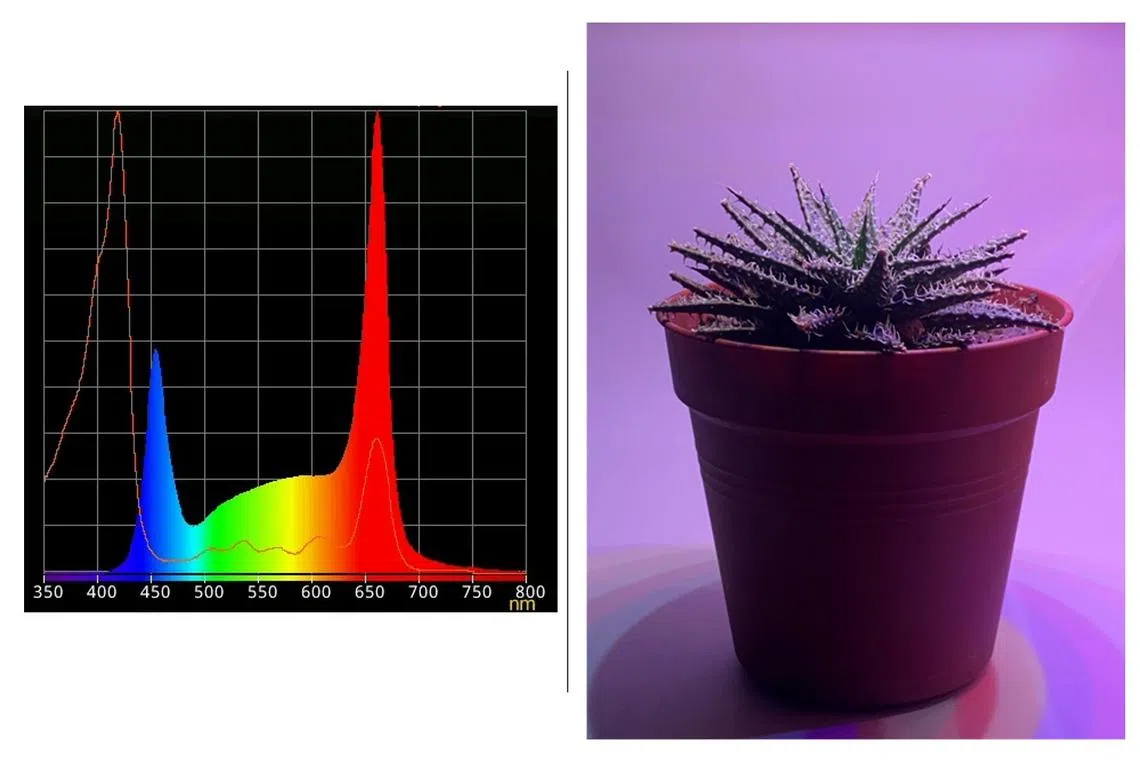Plant Parenting: A guide to LED grow lights
Sign up now: Get ST's newsletters delivered to your inbox

Grow lights generally come in the form of spot lights or tube lights.
PHOTO: WILSON WONG
Wilson Wong
Follow topic:
SINGAPORE – High-rise dwellers who want to bring greenery indoors often cannot provide sufficient sunlight for their plants to thrive.
With the advent of LED (light-emitting diode) technology, “grow lights”, or lighting specifically designed for growing plants, are now widely available.
These energy-efficient lights can either supplement or substitute natural sunlight, so you can cultivate plants in the living space or office.
Anyone who has dabbled in grow light technology will be greeted with technical details. This column attempts to simplify things for the layman.
Spectra basics
Grow lights are designed to provide the specific light spectra that contain the range of light wavelengths that plants need for photosynthesis, growth and development. These lights differ from conventional lighting for interior spaces, which have different light spectra and are generally ineffective in supporting plant growth.
When choosing grow lights for indoor living and working spaces, use those that will not distort your visual perception and cause discomfort to your eyes.
It is impractical for hobby gardeners to procure an expensive spectrophotometer to ascertain the light spectrum and intensity in their homes. Instead, it is better to procure grow lights from reputable companies and rely on the product specifications for guidance on their suitability.
The optimal grow light should have red and blue light with wavelengths of around 660nm (nanometres) and 450nm, respectively.
A grow light with a higher proportion of red may cause some plants to flower and develop a stretched appearance. One that has more blue light will lead to shorter, more compact plants.

A grow light that has more blue will take on a purplish cast.
PHOTO: WILSON WONG
Between the red and the blue regions lie the rest of the visible light wavelengths. Their relative amounts will determine the “whiteness” of your grow light. Note that some of the wavelengths in this portion are needed for plant growth.
Although grow lights that contain wavelengths in the visible light spectrum are termed “full-spectrum lights”, they may not emit a spectrum that resembles natural sunlight.
Snap a picture using your smartphone camera and see how your plants look under the grow light’s illumination. You should aim for something that looks as close to natural lighting as possible.

The spectrum of light emitted by a grow light is very close to that of natural sunlight. A plant placed under this grow light appears natural to the viewer.
PHOTO: WILSON WONG
Speciality lights
Grow lights for general usage typically do not contain ultraviolet (UV) and far-red lights. These wavelength regions are usually available only in speciality grow lights that are used in research or the agriculture industry.
UV-A (between 320 and 400nm) is generally used to induce a stress response in plants, causing them to produce protective chemicals such as antioxidants. Pigments that result in foliage colour will also increase upon UV light exposure. Far-red wavelengths can elicit plant stretching, leaf area expansion and flowering in some plants.

A grow light that has more red will take on a violet cast.
PHOTO: WILSON WONG
I would discourage the use of UV grow lights in a hobby gardener’s indoor spaces, due to their potential harmful effects. Grow lights with far-red light (between 700 and 750nm) can cause plants to stretch, which may not be desirable aesthetically.
What fixtures should you use?
There are two main fixtures available online: spot lights and tube lights.
Spot lights shine intense light on a small area, so they are suitable for a single plant that needs a lot of light, or several smaller ones placed close together.
Tube lights, available in various lengths, generally emit less intense light. Several tubes are placed side by side, lengthwise, to cover a canopy of plants. These need to be placed closer to plants and are commonly integrated into multi-tiered shelves.
How far above the plants should a grow light be?
The distance between the grow light and a plant largely depends on the grow light’s intensity and the plant’s light requirements. Plants that need a lot of light should be placed nearer the light source, though you run the risk of burning the leaves if they get too close to the light.
In general, grow lights can be placed at least 10cm from the top of the plant canopy. Ensure that the light it emits reaches all parts of the plant for best results.
Your plant will let you know if it is not getting enough light. It will look leggy and stretched, with the distance between new leaves along the stem farther apart than that of its older growth.
How long should a grow light be on?
Generally, plants need 12 to 16 hours of light a day to thrive. Low-light plants may need only about six to eight hours a day, depending on the grow light’s intensity.
Grow lights can be connected to a timer to automate the lighting schedule.
Safety first
As grow lights often produce more intense light than conventional room lighting, it is important to point them away from one’s eyes. Avoid working with or looking at your plants for too long when grow lights are switched on.
Put on protective eyewear if you need to, and take breaks to minimise eye strain and fatigue that may result from the effects of light at certain wavelengths and flickering.
Electricity and water do not mix, so do not let water or fertiliser solutions come into contact with the electrical fittings of grow lights. Do not touch grow lights with wet hands.
Plant Parenting is a new series about houseplant care and other gardening essentials. Have a gardening topic you are interested in? Write in to . We reserve the right to edit and reject questions.
Dr Wilson Wong is an NParks-certified practising horticulturist and parks manager. He is the founder of Green Culture Singapore and an adjunct assistant professor (Food Science & Technology) at the National University of Singapore.

